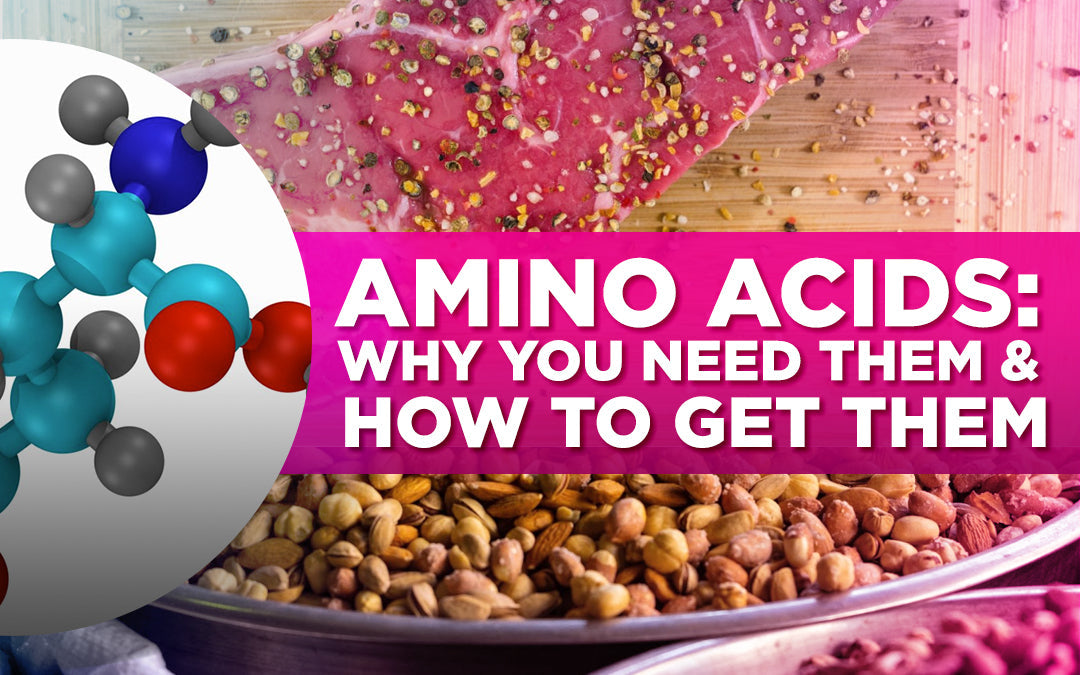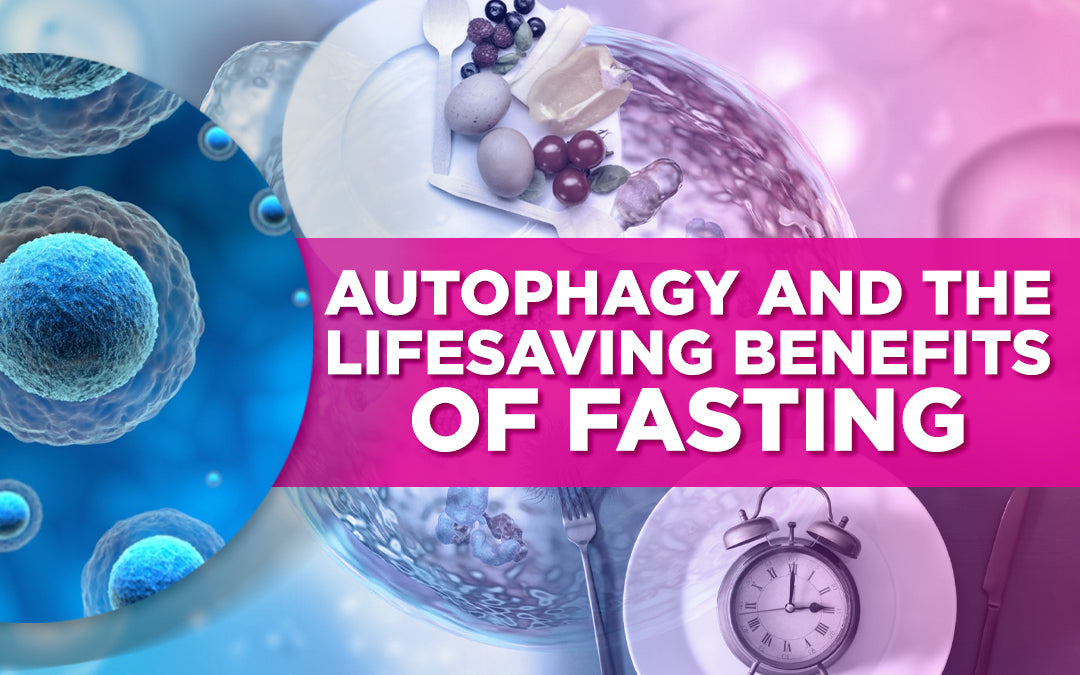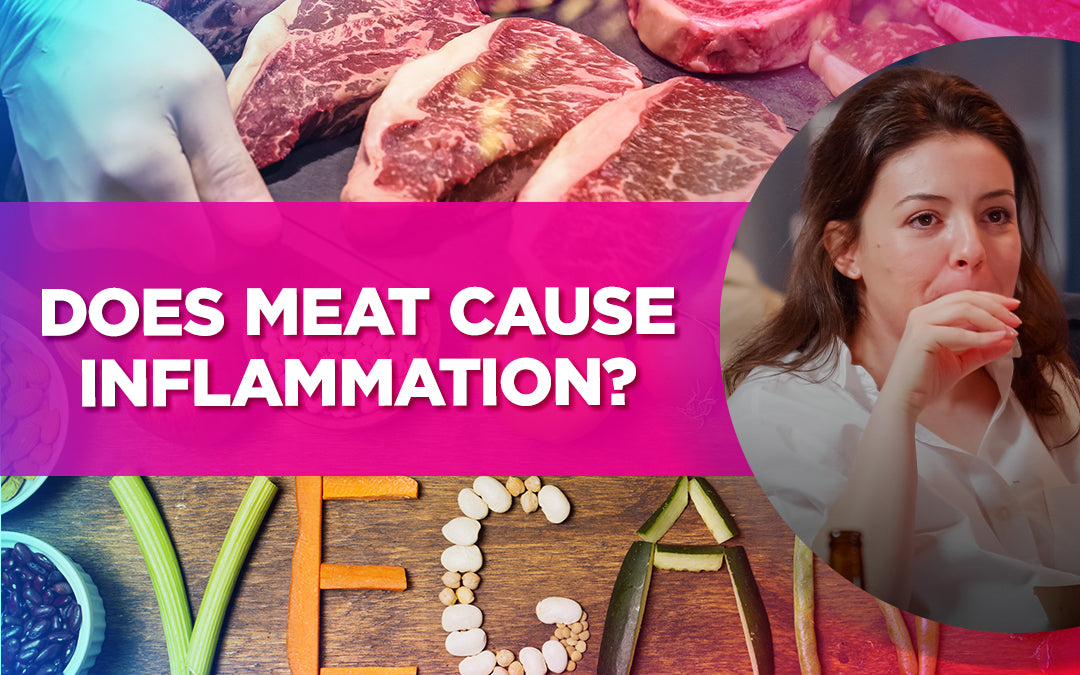AMINO ACIDS: WHY YOU NEED THEM & HOW TO GET THEM
Dr LivingoodShare

Our body is made of trillions of cells, and they have requirements to be healthy. There are 7 main pieces to cells, and one of them is amino acids.
In this blog, I’m going to break down essential and non-essential amino acids, as well as complete and incomplete proteins.
What Are Amino Acids?
Proteins are the building blocks of your body that are built out of amino acids. Amino acids are used to break down food that we eat, grow and repair bodily tissues, perform major bodily functions, and can even be used as emergency energy sources.
Have you ever wondered how your body produces new muscle after working out? When you work out, your muscle tears and those tears are filled in by new proteins derived from amino acids.
Your muscles are directly affected by how many amino acids that you put into your body. Your body can make some amino acids, but others you have to eat.
3 Types of Amino Acids
Essential Amino Acids
These are the 9 amino acids your body doesn’t make. You have to get them from food. These build bodily tissue, including organ and skin cells, through collagen formation.
Non-essential Amino Acids
These are the 11 amino acids your body has the ability to create, but your body can run low on them.
They support the growth and repair of new tissue in the body, and synthesize new red blood cells. Without them, your body wouldn’t be able to produce new blood.
They’re also vital to the function of your immune system and protecting you from diseases. They’re involved with hormone synthesis as well.
Conditional Amino Acids
These are 8 amino acids that your body can make, but only if you’re healthy. If you’re stressed or sick, your body won’t have the raw materials to make them. So if you’re not healthy enough to make these, you have to get them from food.
These 20 amino acids are critical for your body and its health. So how do we get more of them in our system? One thing we can do is eat protein from clean sources, but not all proteins are built the same.
Types of Protein

Complete Proteins
Complete proteins provide all of the 9 essential amino acids. These are typically animal-based foods such as meat, dairy, and eggs.
If you’re going to have meat, get it from grass-fed, free-range, and (in the case of fish) wild-caught sources. This will ensure that it’s a cleanly-sourced meat, and will allow you to get protein without getting inflamed or sick.
When looking at protein powders, try to get complete proteins, but stay away from dairy if possible. Dairy will put extra lactose in your system, and will often come from unclean sources with antibiotics and hormones.
A good alternative to dairy is collagen, which still comes from animal sources, and has 19 out of the 20 amino acids. Although it’s not technically a complete protein, it’s a cleaner source than dairy.
Incomplete Proteins

Incomplete proteins are traditional vegetable-based foods such as:
- Whole Grains
- Legumes
- Seeds
- Nuts
- Spinach
- Broccoli
- Mushrooms
“Incomplete” makes them sound bad, but it just means that they don’t provide all of the essential amino acids. There are a couple of vegetable proteins that are complete, however. Good vegetable sources of complete protein include:
- Peas
- Quinoa
- Buckwheat
- Algae
These aren’t genetically modified like soy or grains, which can also be complete proteins.
Daily Recommended Protein Intake
An adult needs about half a gram of protein per pound of lean body weight each day. An easy way to calculate how much you need is by taking your total body weight and dividing it in half..
I recommend 20-30 grams of protein per meal for men and 15-20 grams of protein per meal for women. This will give your body the protein it needs, lots of amino acids, and won’t overtax the kidneys.
My favorite source of protein is collagen because it doesn’t spike insulin, and 60-70% of all the protein in our body is collagen. It depletes with age, so we need to replenish it.
As a next step, I made a video breaking down everything you need to know about collagen, and I put it right here for you.
Share
Related Articles
Most Popular
-
The 5 Amazing Benefits of Omega-3s
August 13, 2024 -
Healing Your ‘Second Brain’: The Path to a Healthier Gut
August 13, 2024







